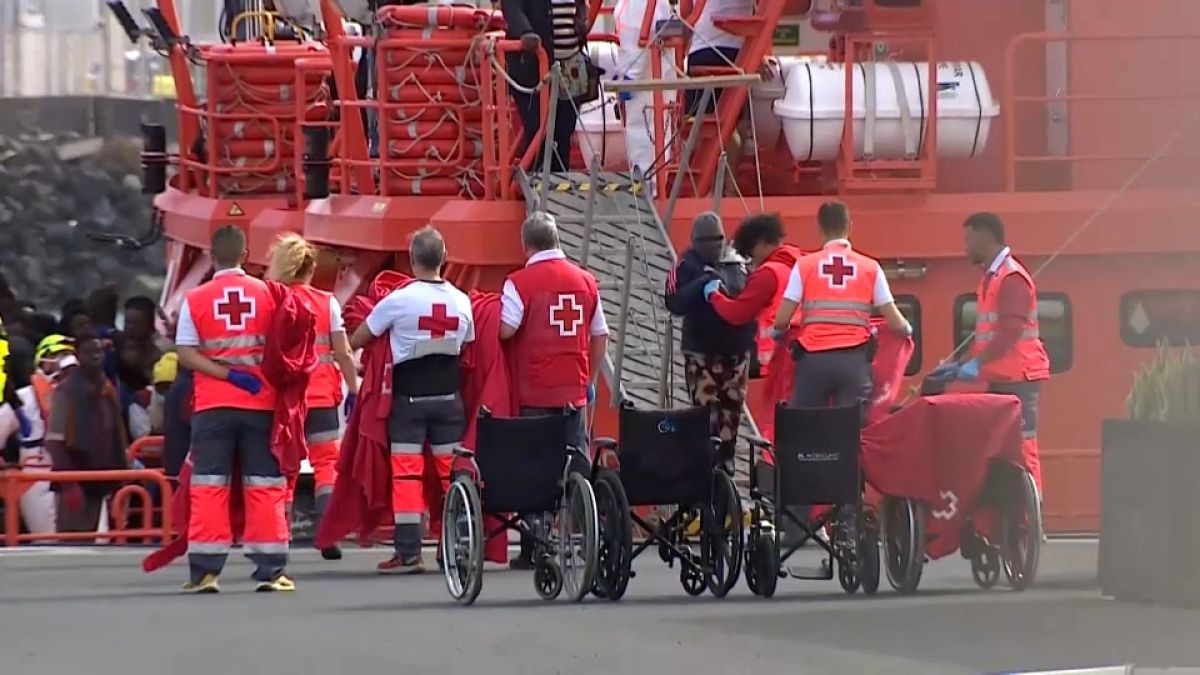The latest arrivals in 2025 add to growing concerns about the uptick in irregular migration to the Canary Islands, a Spanish archipelago close to the African coast that has increasingly been used as a stepping stone to continental Europe.
Around 183 migrants aboard three different vessels reached the coast of the Canary Islands on Saturday, among them 24 women and at least seven minors, all sub-Saharan, local officials say.
Spanish authorities said about 110 of the migrants were on two boats that were intercepted on their way to the port of Naos in Lanzarote.
Their arrival followed that of a small canoe on Friday night at the port of La Restinga on the island of El Hierro. Local officials said the migrants were attended to by Spain’s Maritime Safety and Rescue Society and the Red Cross with clothes, blankets, and food.
The latest arrivals in 2025 add to the growing concerns about the uptick in irregular migration to the Canary Islands, a Spanish archipelago close to the African coast that has increasingly been used as a stepping stone to continental Europe.
According to the Spanish interior ministry, last year Spain received 63,970 irregular migrants, the vast majority in the Canaries, up from 56,852 in 2023.
Around 10,000 migrants died at sea last year trying to reach Spain
A report released by a Spanish migration rights group in December said more than 10,000 migrants died while trying to reach Spain by sea last year.
On average, that means 30 migrants died every day in 2024 while attempting to reach the country by boat, Caminando Fronteras (Walking Borders) said. Overall deaths rose 58% compared to 2023, the report added.
Caminando Fronteras said most of the 10,457 deaths, including 1,538 children and 421 women recorded up until 15 December, took place along the so-called Atlantic route, which leads to the Canary Island and is considered one of the world’s most dangerous.
The organisation said it compiled its figures from families of migrants and official statistics of those rescued.
Read the full article here


